HOT NEWS !
Stay informed on the old and most recent significant or spectacular
nautical news and shipwreck discoveries

-
Coins, cannon recovered from the San Jose
- On 08/12/2025
- In Famous Wrecks

From CBS News
A cannon, three coins and a porcelain cup were among the first objects Colombian scientists recovered from the depths of the Caribbean Sea where the mythical Spanish galleon San José sank in 1708 after being attacked by an English fleet, authorities said Thursday.The recovery is part of a scientific investigation that the government authorized last year to study the wreckage and the causes of the sinking. Colombian researchers located the galleon in 2015, leading to legal and diplomatic disputes. Its exact location is a state secret.
Dubbed the "holy grail of shipwrecks," the ship is believed to hold 11 million gold and silver coins, emeralds and other precious cargo from Spanish-controlled colonies, which could be worth billions of dollars if ever recovered.
President Gustavo Petro's government has said that the purpose of the deep-water expedition is research and not the treasure's seizure. Colombia's culture ministry said in a statement Thursday that the cannon, coins and porcelain cup will undergo a conservation process at a lab dedicated to the expedition. The wreckage is almost 2,000 feet deep in the sea.
-
Gold watch from the Titanic sold for $2.3 million !
- On 08/12/2025
- In Auction News
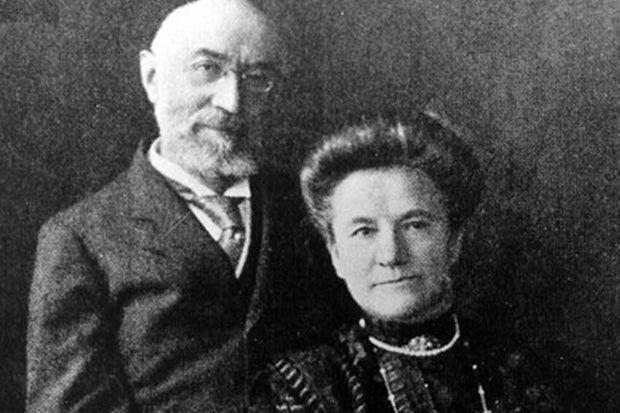
By Emily Mae Czachor - CBS News
A pocket watch that once belonged to one of the Titanic's most renowned passengers has sold at an auction for $2.3 million — a record price for memorabilia related to the historic shipwreck, according to the auction house.
The 18-carat gold watch was gifted to its original owner, Isidor Straus, by his wife, Ida Straus, for his 43rd birthday,said Henry Aldridge and Son, the auction house that sold it on Saturday. It was recovered from his body after the Titanic sunk in the North Atlantic in April 1912.
Isidor Straus was an American businessman and politician who owned the Macy's department store in New York City. He and his wife were first-class passengers on the Titanic during its maiden voyage from England to New York, and the couple are remembered for their final act of selflessness while on board.
Witnesses who survived the Titanic wreck said afterward that the Strauses were offered two seats on a lifeboat once the ship had struck an iceberg, according to the U.K. government's National Archives.
But Isidor Straus refused his seat, instead insisting that it should have been offered to younger men, and Ida Straus followed him, reportedly saying, "Where you go, I go."
According to those archives, Isidor and Ida Straus were last seen standing arm in arm on the deck of the Titanic, before a wave crashed overhead and washed them out to sea.
The Strauses were the ancestors of Wendy Rush, wife of OceanGate founder Stockton Rush, who died in the infamous Titan submersible explosion in 2023 en route to the Titanic wreck site.
-
South Korea uncovers 600-year-old shipwreck
- On 08/12/2025
- In Underwater Archeology
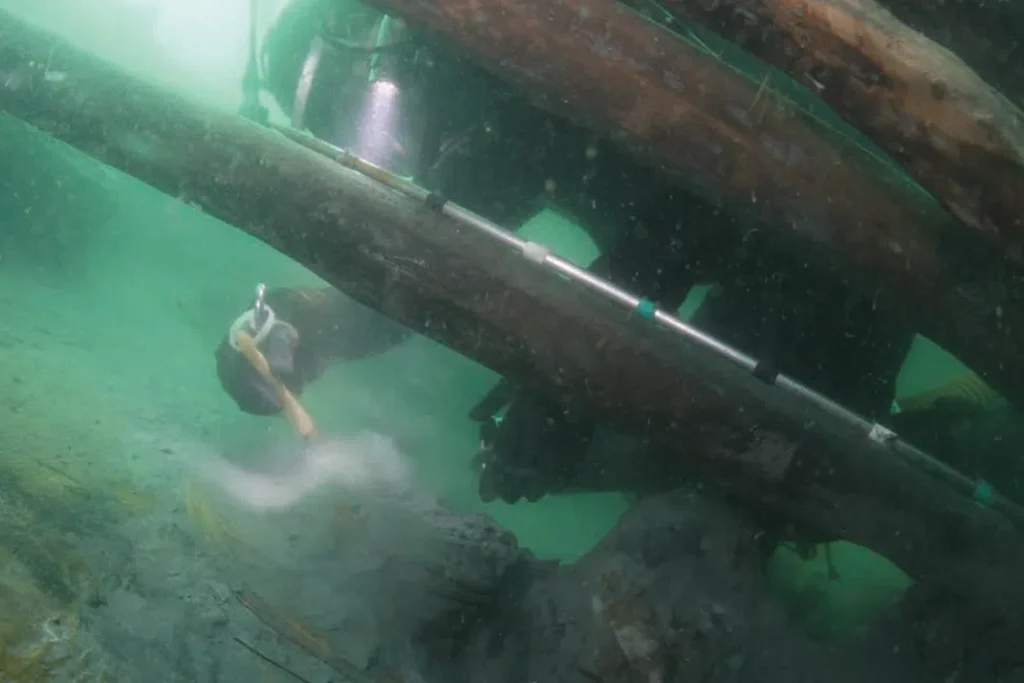
From Fairtrade
In a significant archaeological discovery, South Korean researchers have recovered a 600-year-old tax ship, known as Mado 4, which provides insight into the maritime operations of the Joseon dynasty (1392–1910). The vessel was raised from the seabed off the west coast in October 2022, following nearly a decade of conservation efforts.
Mado 4 is the only fully excavated Joseon-era ship and offers tangible evidence of the kingdom’s complex maritime tax network.
Initially discovered in 2015 near Taean, South Chungcheong province, Mado 4 rests at approximately 25 meters deep. The excavation site yielded over 120 artifacts, including wooden cargo tags denoting destinations, state rice containers, and government-produced porcelain.
These artifacts confirm that the ship was integral to a state-run transport system called “joun,” essential for moving grain and official goods from regional depots to Hanyang, now Seoul.
The ship is believed to have sunk around 1420 while navigating treacherous waters from Naju, a grain collection center. Its preservation under sand and silt has allowed researchers to observe key elements of Joseon-era engineering. Notably, Mado 4 features a twin-mast design, marking a departure from the single-mast ships prevalent prior, indicating advancements aimed at improving speed and maneuverability.
Moreover, the use of iron nails for repairs—the first confirmed instance of metal fasteners in Korean vessels—contrasts previous understanding that traditional ships relied solely on wooden joints.
-
Three ancient shipwrecks found on the coast Of Northern Israel
- On 25/10/2025
- In Underwater Archeology
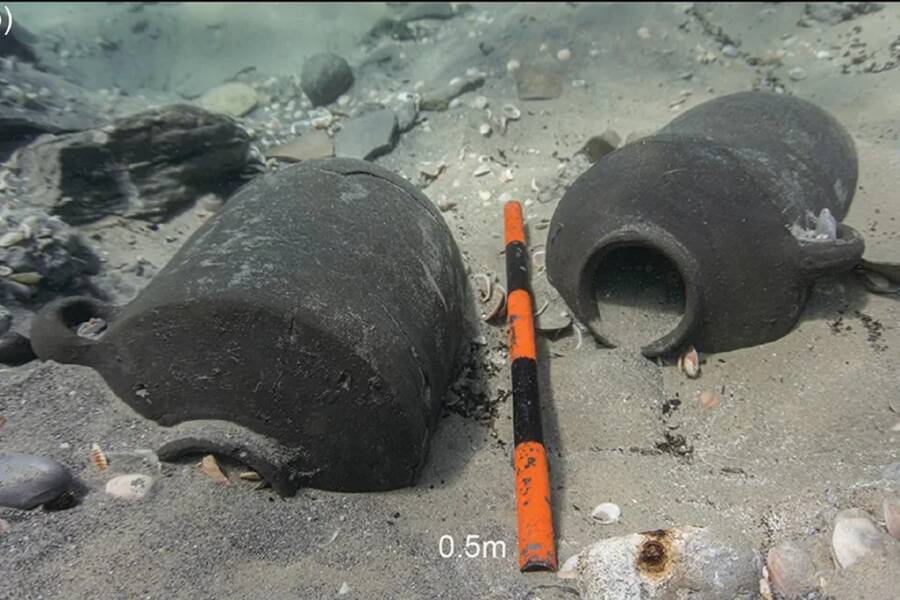
By Ainsley Brown - ATI
Divers at Tantura Lagoon have uncovered three shipwrecks, the oldest of which dates back 3,000 years — and they were filled with containers like bowls, jars, and amphorae as well as food like grapes and dates.Archaeologists have discovered three Iron Age shipwrecks off the coast of Israel, and their cargo has reshaped experts’ understanding of ancient trade across the Mediterranean. The wrecks were found in Tantura Lagoon, also known as Dor Lagoon, near the ancient harbor city of Dor.
This is the first discovery of sunken cargo within a former port city in Israel and it provides deeper insight into Iron Age trade than pre-existing land-based evidence.
A new paper published in the journal Antiquity describes how the project, carried out by the University of California San Diego in conjunction with the University of Haifa, used both traditional methods of research alongside newer techniques. Archaeologists used 3D modeling, multispectral imaging, and digital mapping to examine the wrecks and surrounding waters throughout 2023 and 2024.
In all, the team was able to explore three shipwrecks laden with vast amounts of cargo at a sandbar near Dor.
-
Ancient Greek shipwreck found off Sicily
- On 20/07/2025
- In Underwater Archeology

By Nisha Zahid - Greek Reporter
An ancient Greek shipwreck was uncovered just six meters below the surface off the coast of Santa Maria del Focallo, in the municipality of Ispica, Sicily.The remarkably well-preserved vessel dates back to between the 6th and 5th centuries BCE and is considered one of the most significant finds in the Mediterranean in recent years. The shipwreck was first uncovered in 2024 during the fifth phase of underwater excavations, with further discoveries made in 2025 as part of the sixth campaign.
The excavation is led by the University of Udine’s Department of Humanities and Cultural Heritage, in partnership with the Sicilian Region’s Superintendency of the Sea.
The effort is part of the Kaukana Project, a long-term scientific initiative launched in 2017 by the late Sebastiano Tusa and Massimo Capulli.
The project focuses on reconstructing the historical and underwater landscape of Ragusa province by exploring coastal remains near the ancient cities of Ispica, Kaukana, and Kamarina.
During the five-week excavation conducted between May and June of 2025, archaeologists uncovered an unusually intact structure.
The team retrieved a mast—a component rarely found preserved in ancient wrecks—alongside black-figure pottery, a section of rope in excellent condition, and a small alabastron, or perfume vessel, inscribed with the Greek word “Ναῦ” (Nau), meaning “ship.”
-
Rare 16th-century shipwreck found in French waters
- On 25/06/2025
- In Underwater Archeology

By Andrea Margolis - Fox News
Officials recently unveiled the deepest-recorded shipwreck in French waters, complete with a remarkably well-preserved cargo dating back 500 years.
The findings were announced by the French Department of Underwater and Submarine Archaeological Research (DRASSM) in a Facebook post on June 11. Officials said the ship was found by a French Navy unit during a military operation on March 4.
The shipwreck, which has been dubbed Camarat 4, was found off the coast of Ramatuelle, in southeastern France. It was found over one-and-a-half miles underwater.
"The shipwreck was discovered unexpectedly during an exploratory mission conducted as part of the ministerial strategy for mastering the seabed," said DRASSM's post, which was translated from French to English.
"This newly found wreck stretches 30 meters long and 7 meters wide, indicating a large navigation unit." Officials believe that the vessel dates back to the 16th century based on its cargo, which has remarkably survived the past five centuries.
Underwater pictures show a plethora of handmade ceramics near the wrecked ship. Historians believe the well-crafted artifacts originated from Liguria, Italy.
"The quality of the images obtained allows for detailed examination of this merchandise: around 200 visible polychrome faience [glazed ceramic ware] pitchers, with many more seemingly trapped under sediment," DRASSM said.
The pitchers also prominently feature the Christogram IHS, which symbolizes Jesus Christ, reflecting the enormous role that Christianity played in early modern Europe.
"These globular pitchers with pinched spouts and ribbon handles, typical of 16th-century Ligurian production, are adorned with the Christ monogram 'IHS' [and] various vegetal and geometric decorations," DRASSM added. "Several motifs have been identified."
-
Shipwreck mystery solved after nearly 140 years
- On 07/06/2025
- In Wreck Diving
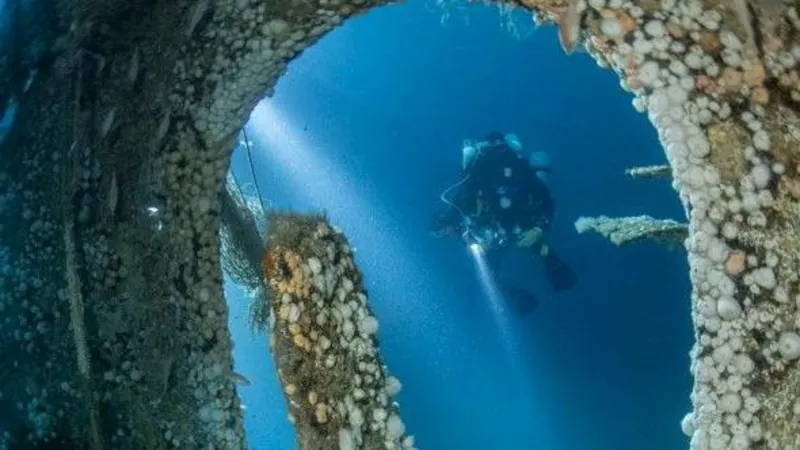
By Chris Ellis - BBC
The mystery of a maritime disaster has been solved after experts found a vessel that sank almost 140 years ago. Diver and explorer Dom Robinson identified the SS Nantes, off Plymouth, after examining the wreck site and finding crockery.Dr Harry Bennett, an expert in maritime history, said the dive team had found "the underwater archaeological equivalent of a needle in a haystack". Mr Robinson said solving the mystery ensured those who died were not forgotten.
In November 1888, the SS Nantes, which was operated by the Cunard Steamship Company, collided with a German sailing vessel, the Theodor Ruger, said Dr Bennett. The crew spent "several hours" trying to save their ship, the honorary associate professor in history at the University of Plymouth said.
"They used mattresses to plug the gap which had opened up in the hull of the SS Nantes," he said. "[The ship sank] with the loss of a substantial number of the crew. There were some 23-odd fatalities. There were three survivors.
" Bodies from the wreckage washed ashore at Talland Bay and Looe, in Cornwall, and "locals were confronted by this picture of horror, pieces of ship together with bodies," he said.
Afterwards the "wreck was essentially lost, obviously you're dealing in a period with no satellite navigation," said Dr Bennett. He added while the crew tried to save the ship it "drifted for several hours, before it finally made its way to the bottom, sadly, with many of its crewmen on board".
He said the wreck was lost until a local dive team identified it in 2024. Mr Robinson, who has been diving for about 35 years, said he heard about the unidentified wreck from the UK Hydrographic Office.
-
Public to see Arran shipwreck pottery for first time
- On 06/06/2025
- In Museum News
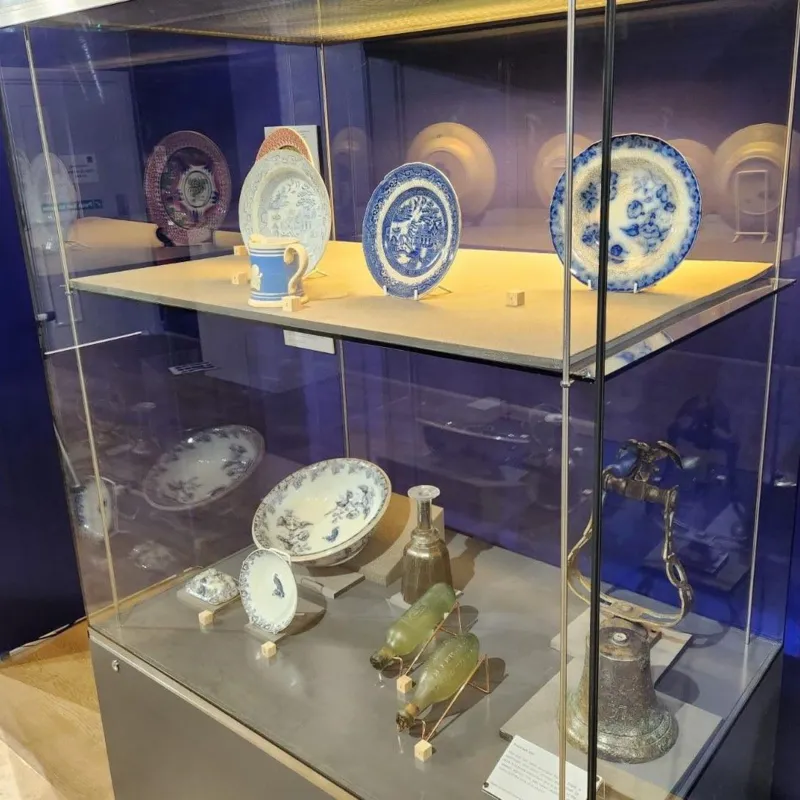
From BBC
Pieces of rare 19th Century pottery - which were recovered from a shipwreck off the coast of Arran - are to go on display for the first time. The ceramics were discovered by diver Graeme Bruce, 65, from Oban in the wreck of the SS Eagle, a mile from Lamlash Bay, last July.The ship - an early steamboat - was heading to Ireland when it sank in 1859 after colliding with another vessel. Eleven people died. Several artefacts made by the Glasgow-based Bell's Pottery will appear in the Scottish Maritime Museum's Summer exhibition which opens in Irvine on Saturday.
Graeme, a retired engineer, and the team of seven other divers, were 53 metres beneath the surface when they spotted the treasure trove of rare pottery. Most of the ship had rusted away but the cargo was lying well preserved in the mud. In the 19th century, Glasgow was a major centre for the production of ceramics and rivalled the Staffordshire potteries.
Bell's Pottery is recognised as arguably the most internationally significant producer of ceramic wares in Scotland at the time. The haul on the SS Eagle is an unprecedented example of an almost intact cargo of 19th century Glaswegian ceramics.
The SS Eagle's ceramics cargo was destined for trade and exhibition in Londonderry. Exhibits include seven plates and a bowl, a teapot lid and two bottles which still hold 'sparkling water' in addition to a decanter and bell. Eva Bukowska, exhibitions and events officer at the Scottish Maritime Museum, said: "We are really excited to host the first showing of these fascinating ceramics recovered from SS Eagle.
"The vessel also has a significance for the museum as it was built by Alexander Denny, who was the brother of William Denny, whose test tank is now home to our second collection in Dumbarton."